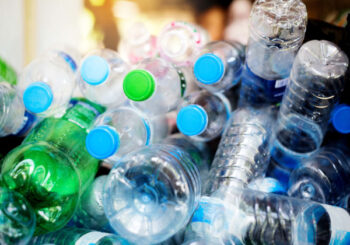By Jane Marsh
Guest Writer for Wake Up World
You’ve probably interacted with PET plastics, even if you haven’t heard of them. They’re famously harmful to the planet and human health. How bad could they be if most major companies still use them? It turns out the risks can be dire.
What Are PET Plastics?
Accordion got the Organization for Economic Co-Operation and Development, the worldwide amount of plastic waste will triple by 2060. Many companies use plastic so much because it’s durable and affordable. Still, some types may be more trouble than they’re worth.
You’ve most likely used polyethylene terephthalate (PET) plastics before. Have you ever sipped from a single-use bottle or worn polyester? If so, you’ve come into direct contact with them. They’re transparent and durable, so manufacturers commonly use them for packaging and clothes.
What Items Contain PET Plastics?
While certain alternatives are completely recyclable and better for the environment, most businesses still use PET. Major corporations use it in drink bottles, clothes and household containers. You likely have some in your home currently.
You may only read the tag on a new shirt occasionally, but consider making it a habit. As of 2022, nearly 60% of clothing in the world contains polyester — which contains PET. The amount you have in your closet will probably surprise you.
Plastic bottles are another big one. As of 2023, about 600 billion exist worldwide, accounting for millions of tons of pollution. Both the container and cap typically use PET.
How Bad Is PET?
PET is arguably worse than other types of plastic because it damages the planet and human health in multiple ways. Plus, it’s practically everywhere — so the effect is massive and widespread. It has adverse impacts during every step of its life cycle.
The manufacturing process releases tons of greenhouse gases into the air. It also leaks toxins into the ground and water. Essentially, it affects every aspect of the environment. PET also impacts people. Anyone living close to production plants can come into contact with these hazardous chemicals.
Even if you don’t see PET, you’re probably interacting with it. In fact, a single person breathes or eats over 120,000 pieces of microplastics every single year. Pregnant people may even pass the contaminants on to their unborn children.
Since most containers are single-use only, people throw them out. Once in the trash, they eventually break down in waterways and harm marine animals. They also end up in landfills, which isn’t good for the environment. It takes plastics thousands of years to degrade. Even after breaking down, they release harmful particles into the earth and water.
It happens whenever you wash polyester, recycle PET or throw plastic away. Small particles break off and stay on surfaces. Since they’re invisible to the human eye, most people don’t even realize they come into contact with them. To no one’s surprise, it affects your health over time.
Can’t People Just Recycle PET Plastics?
Although you can technically reuse PET products, you shouldn’t. Have you ever noticed the chasing arrows logo on a product? The number inside tells you what materials the company made it with. While this type of plastic is number one — the most recyclable — new research reveals it might be better to toss it instead.
It turns out that PET becomes more hazardous after processing and can leak harmful chemicals. The researchers found that it contaminates drinks since most companies use it in their packaging. Although choosing recycled goods is better for the planet, picking something else is better for your health.
Ultimately, PET has a massive long-term impact. It doesn’t naturally break down, leaks toxins when people reuse it and fragments into microplastics that everyone accidentally inhales or eats. The longer companies use it, the more it affects the environment and human health.
What’s the Solution?
While companies might not want to switch to environmentally-friendly alternatives at first, it’s their best option. You can’t safely produce, use or even recycle PET plastics, so finding a different material is necessary. It would also be much better for the Earth.
While one individual can’t dictate a company’s policy, consumers can offer encouragement. To start, you can stop purchasing products that contain it. If the packaging has a chasing arrows logo with the number one inside of it, choose something else. You can also contact a business directly and inform them of sustainable alternatives.
How Are Alternatives Beneficial?
Sustainable alternative packaging is much better for the environment and human health than PET. It won’t produce microplastics or leak the same toxins, which is incredibly beneficial.
Alternative packaging is more beneficial:
- Fewer greenhouse gas emissions: PET produces over 8.8 million tons of carbon dioxide yearly. Switching to an eco-friendly option would minimize that number, especially if the manufacturers use renewable energy.
- Less plastic waste: One of the most significant issues with plastic is waste. A sustainable alternative could be compostable or fully recyclable, which would be much better for the planet.
- Healthier future: Pregnant people can accidentally breathe or eat microplastics, meaning children will be born with plastic inside them. Environmentally-safe barrier packaging improves the health of future generations.
- Well-being improvements: Drinking, eating or wearing recycled PET can cause immediate and eventual health issues. Alternatives can significantly reduce your risk for cancer, heart disease and strokes.
Switching to an eco-friendly option is safer for human health and the Earth. Companies can make a massive difference in millions of lives with a minor packaging change.
Stop Using PET Plastics
While stopping PET plastic use is easier said than done, the switch would bring so many positive effects. Companies can use alternative barrier packaging or people can choose sustainable alternatives. Either way, making a change can benefit the planet and everyone living on it.
About the author:
 Jane is the founder and editor-in-chief of Environment.co where she shares practical tips on how to live a greener life.
Jane is the founder and editor-in-chief of Environment.co where she shares practical tips on how to live a greener life.

If you've ever found value in our articles, we'd greatly appreciate your support by purchasing Mindful Meditation Techniques for Kids - A Practical Guide for Adults to Empower Kids with the Gift of Inner Peace and Resilience for Life.
In the spirit of mindfulness, we encourage you to choose the paperback version. Delve into its pages away from screen glare and notifications, allowing yourself to fully immerse in the transformative practices within. The physical book enriches the learning process and serves as a tangible commitment to mindfulness, easily shared among family and friends.
Over the past few years, Wake Up World has faced significant online censorship, impacting our financial ability to stay online. Instead of soliciting donations, we're exploring win-win solutions with our readers to remain financially viable. Moving into book publishing, we hope to secure ongoing funds to continue our mission. With over 8,500 articles published in the past 13 years, we are committed to keeping our content free and accessible to everyone, without resorting to a paywall.








